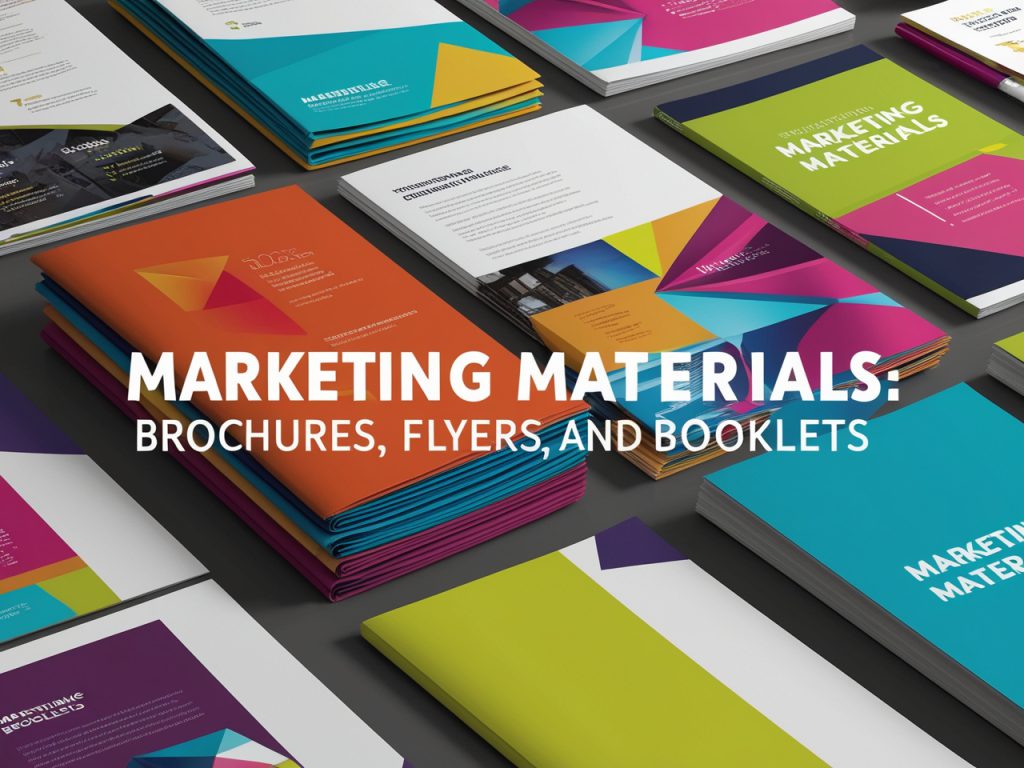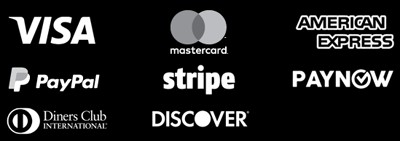
Brochures, flyers, and booklets are essential tools for promoting your brand, products, or services. They are versatile, cost-effective, and allow businesses to convey detailed information in an easily digestible format. Whether you’re launching a new product, running a promotion, or showcasing your company, these printed materials can help communicate your message effectively. Here’s a guide to understanding the differences between brochures, flyers, and booklets, along with tips for designing and printing them.
1. Brochures #
A brochure is a folded document that provides more detailed information about a product, service, or event. It is commonly used for marketing campaigns, trade shows, or informational purposes, offering more space to convey your message than a flyer while remaining compact.
Types of Brochures: #
- Single-Fold: A simple brochure with one fold, creating two panels.
- Tri-Fold: The most common type of brochure, featuring three panels that fold into one another, creating six sections for content.
- Z-Fold: Similar to a tri-fold but folded in a zig-zag pattern, creating three distinct panels on each side.
- Gate Fold: Features two side panels that fold inward to meet in the middle, creating a dramatic reveal when opened.
- Bi-Fold: Consists of two panels and offers four pages of content, making it ideal for presentations.
Best Uses for Brochures: #
- Corporate Marketing: Company overviews, services, and history.
- Product Catalogs: Detailed product descriptions with images.
- Event Promotion: Information about conferences, seminars, or exhibitions.
Design Tips: #
- Use High-Quality Images: Brochures often include visuals, so high-resolution images are essential for maintaining a professional appearance.
- Keep Text Readable: Avoid cramming too much text into one panel. Use bullet points, headings, and short paragraphs to make the content easier to digest.
- Incorporate Your Brand Colors: Stay consistent with your brand’s color scheme and fonts to maintain a cohesive look across all marketing materials.
Finishing Options: #
- Gloss Lamination: For vibrant colors and a polished look.
- Matte Lamination: For a sophisticated, non-reflective finish.
- Spot UV: Highlights certain areas of the brochure with a glossy coating for contrast.
2. Flyers #
A flyer is a single-sheet, unbound marketing tool that is typically used to promote events, sales, or new products. Flyers are cost-effective and designed for mass distribution, making them ideal for grabbing attention and delivering quick, impactful messages.
Common Flyer Sizes: #
- A4 (210mm x 297mm): The standard size for flyers, offering plenty of space for text and images.
- A5 (148mm x 210mm): Smaller and more compact, great for distributing at events or handing out.
- DL (99mm x 210mm): Slim and narrow, often used for mailers or brochures placed in envelope racks.
Best Uses for Flyers: #
- Event Promotion: Concerts, conferences, sales, or grand openings.
- Product Launches: Highlighting new products or services with short, impactful messages.
- Coupons and Discounts: Flyers can serve as discount vouchers or promotional codes to encourage purchases.
Design Tips: #
- Create a Strong Headline: The headline should grab attention and clearly convey the message of your flyer.
- Include a Call to Action (CTA): Make sure your flyer encourages the reader to take action, whether it’s attending an event, visiting a website, or taking advantage of a sale.
- Limit Text: Flyers should be concise and focused on a single message. Keep the text minimal and emphasize key points with bold, easy-to-read fonts.
Finishing Options: #
- Gloss Finish: For a bright, eye-catching effect.
- Matte Finish: Offers a more refined, professional look.
- UV Coating: Adds a glossy protective layer that enhances durability and color vibrancy.
3. Booklets #
Booklets are multi-page documents that allow businesses to provide in-depth information about products, services, or events. They are often used for product catalogs, program guides, or company overviews. Unlike brochures and flyers, booklets are bound and can contain numerous pages, offering more space for detailed content.
Common Booklet Sizes: #
- A4: Standard booklet size, often used for corporate reports, catalogs, or manuals.
- A5: A smaller option, ideal for product catalogs or event programs.
- Custom Sizes: Can be tailored to fit specific design needs or branding requirements.
Binding Options: #
- Saddle-Stitched: The most common binding method for smaller booklets, where staples are placed along the spine.
- Perfect Bound: A professional option for thicker booklets where pages are glued to the spine.
- Wire-O or Spiral Binding: Ideal for booklets that need to lay flat, such as instruction manuals or presentations.
Best Uses for Booklets: #
- Product Catalogs: A comprehensive list of products with images, descriptions, and prices.
- Corporate Brochures: Company history, mission, and detailed service offerings.
- Instruction Manuals: Step-by-step guides or user manuals for products.
Design Tips: #
- Organize Content: Break content into sections with clear headings, subheadings, and page numbers for easy navigation.
- Use Quality Images: High-quality images are essential for booklets, especially for product catalogs where details matter.
- Balance Text and Visuals: Maintain a balance between text and images to avoid overwhelming the reader with too much information on each page.
Finishing Options: #
- Gloss or Matte Lamination: Protects the booklet and enhances the feel.
- Foil Stamping: Adds a luxurious touch to covers or titles.
- Embossing/Debossing: Creates a textured finish for titles or logos on the booklet cover.
Differences Between Brochures, Flyers, and Booklets #
| Material | Brochures | Flyers | Booklets |
|---|---|---|---|
| Size | Multi-fold, typically A4 or A5 | Single-page, A4, A5, DL | Multi-page, A4, A5, custom |
| Content | Detailed, offers more room for text/images | Short, concise, and to the point | In-depth, more space for detailed content |
| Binding | Folded | Unbound, single-sheet | Bound (saddle-stitched, perfect bound, spiral) |
| Best For | Corporate marketing, product/service overviews | Event promotion, sales, special offers | Product catalogs, company reports, instruction manuals |
How to Choose the Right Marketing Material for Your Project #
- Brochures: Choose brochures if you need to convey a moderate amount of detailed information in a compact, folded format. Brochures are ideal for businesses looking to explain multiple services or products in a professional, easy-to-distribute format.
- Flyers: Opt for flyers if you need to grab attention quickly and promote a single event, product, or service. Flyers are perfect for handing out at events or distributing en masse in high-traffic areas.
- Booklets: Use booklets when you need to provide comprehensive information over multiple pages. Booklets are best for product catalogs, annual reports, or event programs that require a structured presentation of detailed content.
Conclusion #
Brochures, flyers, and booklets are versatile marketing tools that serve different purposes. Brochures offer a professional way to showcase products and services in a folded format, while flyers are perfect for quickly communicating key messages or promotions. Booklets provide the space needed for more detailed information and are ideal for catalogs and reports. By understanding the unique strengths of each, you can choose the right format to effectively communicate your message and engage your audience.
You can find free business card templates on Freepik.
Learn more about the different printing methods in this comprehensive guide.





